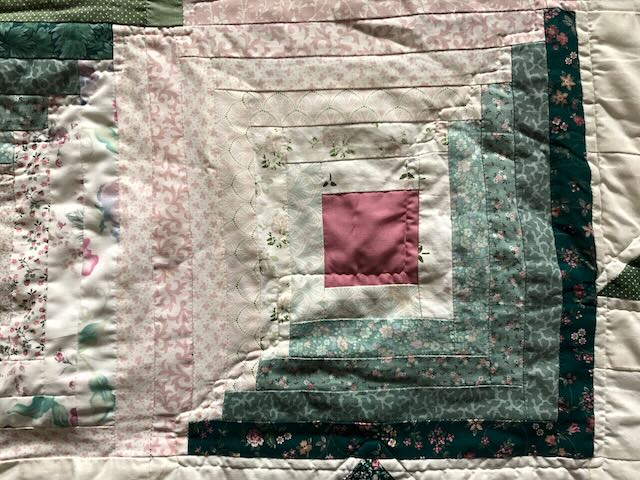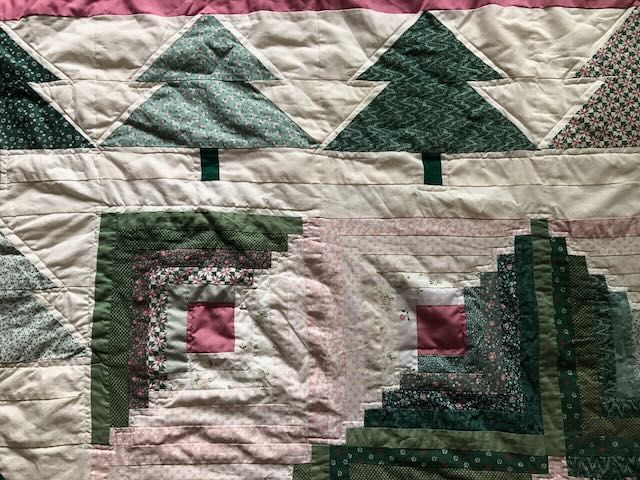I love this quilt! This is especially notable because the era and colors are not among my favorites. What pleases me so much is the full-out exuberance of the fabric choices. The wild (for a background) print makes the whole design dance. This quilt makes me smile!
At some point in its history this Dresden Plate quilt was probably thrown in the washing machine. The wool batting (which may have come from the family's sheep) ended up with lumpy and uneven shrinking. Also, that wild background fabric is unsuitable for the washing because it was very, very lightweight, almost as light as a voile. Apparently, two borders had already been cut back. The remaining two borders were very badly torn, as were 3 large areas in the body of the quilt.
























